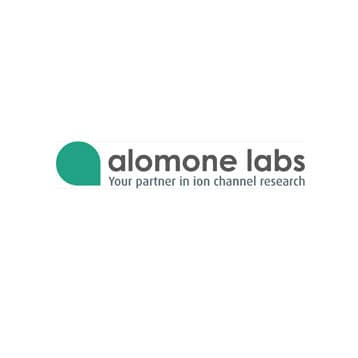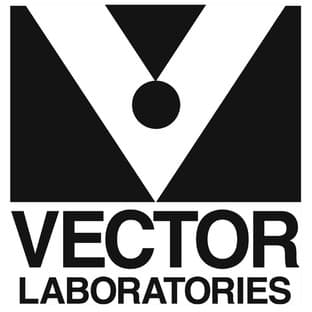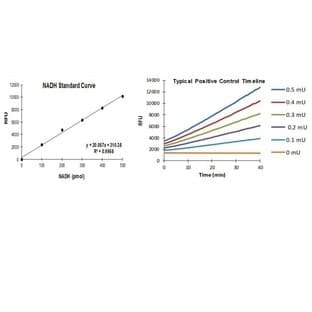
Supplier:
Alomone Labs Limited.Cat no: N-285
BUY proNGF (Mut-human)
proNerve Growth Factor (Mutated-human)
Recombinant, E. coli
The proneurotrophins (proNT) are, as their name suggests, the proform of the neurotrophins. The neurotrophins (NT) are a family of soluble, basic growth factors which regulate neuronal development, maintenance, survival and death in the CNS and the PNS. They exert their biological effects by binding to two types of receptors: the Trk receptors, and the p75NTR receptor. Like many other proteins, mature NT arise from the proteolytic cleavage of the precursor form by various proteases: plasmin, furin, MP7, PC1/3, PC2, PC5/6, PC7 and PACE4, which cut behind a pair or even a single basic residue. This has been known for many years, and it was thought that the roles of the prodomain were to aid in the folding of the mature protein and to sort the mature neurotrophin into the various secretion pathways. However, recently an assortment of papers have been published which suggest new roles for the proNT.
It has been found that proNerve Growth Factor (proNGF), and not mature NGF, is the predominant isoform found in the human brain as well as in a variety of cell types, including mast cells, sciatic nerve cells, thyroid gland, skeletal muscle, prostate gland, hippocampus and hair follicle. Thus, the case of the mouse salivary gland, which is the most abundant source of mature NGF, seems to be the exception and not the rule.
proNGF is the ligand preferred by p75NTR. Therefore, cleavage resistant proNGF (mutated at the cleavage site to insure that it retains the prodomain) induced apoptosis ten times more effectively thanпїЅ mature NGF in a vascular smooth muscle cell line expressing p75NTR but not Trk receptors. However, proNGF can also mediate survival. Rattenholl et al. have shown that proNGF was as effective as NGF in inducing survival of DRG neurons. Fahnestock et al>/i> have shown that a mutated proNGF exhibits neurite outgrowth on both PC12 cells and mouse sympathetic cervical ganglions.
A neccesary but not sufficient partner for proNGF is sortilin, a 95 kDa member of the Vps10p domain receptor family which is expressed in a variety of tissues, notably brain, spinal tissue and muscle. However, not all cells expressing p75NTR and sortilin react to proNGF by becoming apoptotic. For example, in mature pig oligodendrocytes, which express p75NTR and sortilin, proNGF induces survival.
Alomone Labs is pleased to make available a series of novel proNGF preparations to aid in the clarification of this interesting scientific issue.
Neurotrophic Factors, Nerve Growth Factors, NGF
Prices direct from Alomone Labs Limited.
Quick response times
Exclusive Absave savings/discounts
Latest promotions
Buy any polyclonal or monoclonal antibody from our extensive range of pre-made antibodies and for a limited time only receive a $50 discount!(T&C apply:...
New brilliant antibodies, and new lower prices!For flow cytometry reagents in general, \"bright is better.\" The violet-excitable BD Horizon™ BV421 and...
10% Discount on 2 Rabbit Polyclonal Antibody Service. With over 20 years experience, SDIX has developed into the premier US custom antibody producer,...
For the past decade scientists have extensively used ATS secondary toxin conjugates to make their own targeted toxins for in vitro use.The ability to combine...
We're so sure that you'll prefer Cayman Assay kits over your present brand that we're willing to give you a free assay kit to prove it!
Did your supplier increase the price of Fetal Bovine Serum? Did they substitute the US Origin with USDA? Well say no more! Innovative Research is still...
Bulk Cytokines with Custom Vialing.20 - 50% off cytokines, growth factors, chemokines and more...For a limited time Cell Sciences is offering substantial...
Are you planning to have a customised antibody made for your research?Since 2000, Everest has been producing a catalog containing thousands of affinity...
Top suppliers
Agrisera AB
11 products
Biotrend
Biosensis
969 products
ABBIOTEC
3011 products
SDIX
1 products
Spring Bioscience
2291 products
Cell Signaling Technology
4976 products
Rockland Immunochemicals, Inc.
7592 products
Boster Immunoleader
1533 products
OriGene Technologies Inc.
5281 products
Maine Biotechnology Services
227 products
BD (Becton, Dickinson and Company)
1 products
ABNOVA CORPORATION
Randox Life Sciences
1502 products
















